If you’ve ever had poor results growing squash or apples, there’s a good chance that inadequate pollination was the culprit. Pollinators play an essential role in all gardens, especially those that grow food. A wide range of fruiting crops, from sunflowers to raspberries, need the help of bees, butterflies and other pollinating animals.
Attract these hardworking friends by planting pollinator-friendly flowers in and around your garden. Rather than placing flowers inside raised vegetable beds — which can take up room and make things difficult to manage — choose a few spots just outside the beds themselves. If you’re growing tomatoes or peppers (which benefit from, but don’t require, insect pollination) in a hoop house, try adding flowers that are highly attractive to bumblebees, such as mint and snapdragons. Leave plenty of airflow so that these garden friends can get in and out easily.
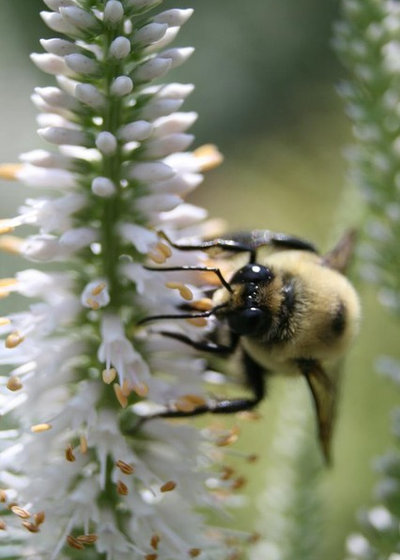
Benjamin Vogt / Monarch Gardens
Pollinators 101Pollinating animals feed on nectar, a sugar-rich substance flowers produce specifically to attract their allies. As pollinators feed, they spread pollen, the male reproductive grains of flowers, distributing genetic material from plant to plant. This process enables plants to set fruit and create seeds.
Bees. The fuzzy bodies of bees have evolved to collect and distribute pollen, providing an essential service to plants. A good portion of the world’s food (including apples, almonds and peaches) require these incredible creatures to set fruit.
Domesticated honeybees are the best-known of nearly 20,000 bee species. Spend time closely observing a patch of clover or mint, and you’ll likely see dozens of different bees, from tiny dark blue ones to enormous bumblebees.
Don’t be afraid of bees. They rarely sting unless you actually put your hand in their nest. Instead, embrace these important garden friends.
Gardening for the Bees, and Why It’s a Good Thing
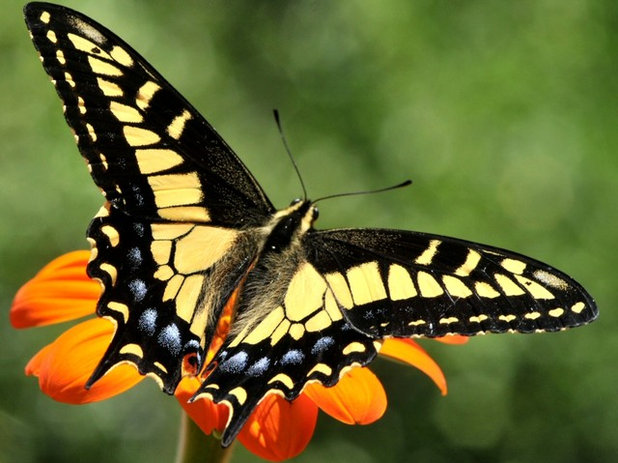
Treebeard
Butterflies and moths. Colorful butterflies are a delight to watch in the garden, especially when gorgeous swallowtail species come to visit. Although they aren’t quite as efficient as bees, butterflies and moths still play essential roles in pollinating gardens.
Keep in mind that the caterpillars of some members of this family, like the common white cabbage moth, can be garden pests. Keep these unhelpful species away by covering brassicas — which include broccoli, cabbage and turnips —with floating row cover material since they don’t require pollination to produce a crop.
6 Steps to Creating Your Butterfly Garden
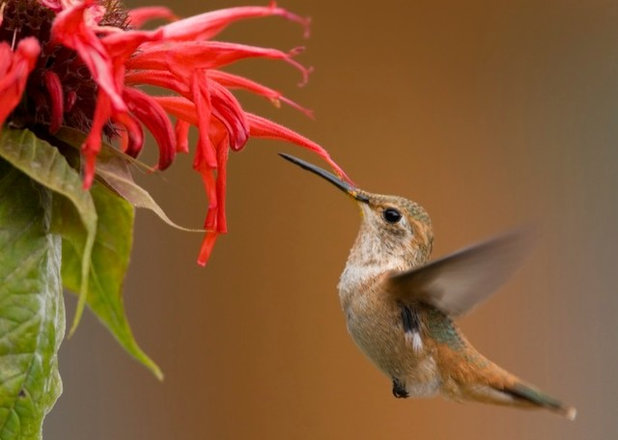
Knoll Landscape Design Miami
Hummingbirds. It’s always a special moment when hummingbirds come by to visit. They’re attracted to tubular or trumpet-shaped flowers, which are too long for most bees to feed from. In many cases, such flowers have evolved specifically for hummingbird pollination. Instead of sugar water and artificial feeders, try planting hummingbird-friendly flowers.
Create a Container Wildlife Habitat for Hummingbirds and Butterflies
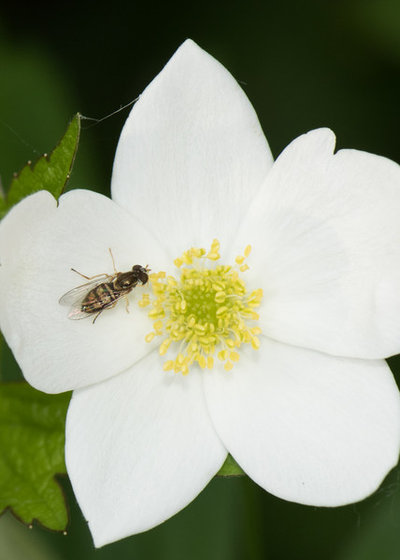
Holm Design & Consulting LLC
Flies, wasps, beetles and bats. Bees, butterflies and hummingbirds get all the pollinator glory, but they aren’t the only ones helping out. Less glamorous species — like flies, wasps, beetles and even bats —can be pollinators too.
The next time you’re in the garden, keep your eye out for syrphid flies, also called hoverflies, which mimic bees with their black-and-yellow stripes. Syrphid flies are less efficient pollinators than bees, but they still can play an important role. What’s more, the larvae of some syrphid flies do a terrific job of eating aphids and other garden pests.
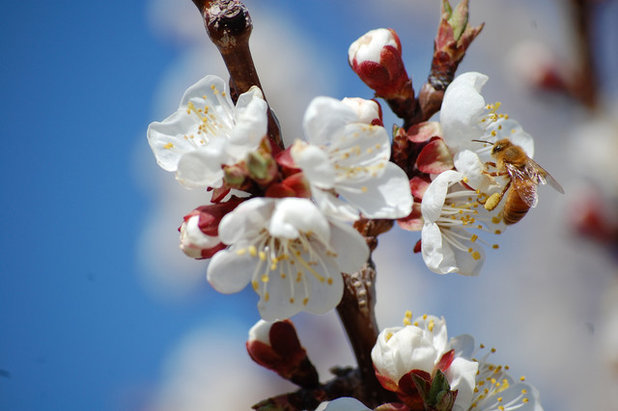
turnbud
Why Pollinators Need HelpIt’s not easy being a pollinator these days. In cities, gardens are broken up by roadways and other obstacles that make it hard for them to forage effectively. Honeybee hives are affected by Colony Collapse Disorder, a devastating phenomenon in which bees abandon their nests, at alarming rates. While there is much discussion and study on the possible causes of CCD (including mites, the use of neonicotinoid pesticides and other stress factors), an effective solution has yet to be found.
Meanwhile, some butterflies aren’t faring much better. Monarch butterfly populations have been decimated in recent decades due to factors including climate change and widespread herbicide use, which kills off their host plant, milkweed (
Asclepias spp.).
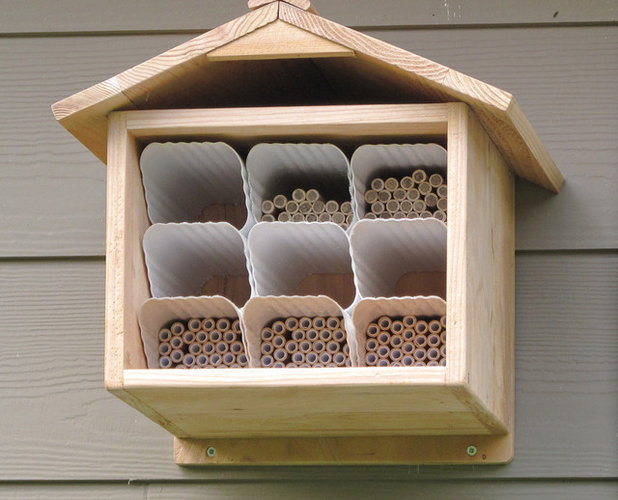
Le jardinet
How to Attract and Protect PollinatorsProvide nesting places for native bees. Mason bee houses are an attractive and fun way to host common wild bee species. They can be purchased or homemade. See how to make a bug habitat.
Don’t clean up the fall garden. Rather than getting rid of your leaves in the fall, rake them up and use them as mulch in your garden beds. Besides providing winter habitat for many butterflies, mulch protects the roots of your plants from winter freezes, summer droughts and invading weeds. Leave some patches of bare earth around your garden as well, as these can be important nesting sites for bumblebees.
Leave out water. Just like us, bees and other pollinators get thirsty. Place some pebbles in a shallow dish and cover them with a small amount of water, leaving the pebbles partially exposed, to provide a watering hole. Change the water daily to keep up with evaporation and to discourage mosquitoes from laying eggs. Alternately, cover the surface of a water-filled bucket with used wine corks. The bobbing motion will make it less appealing to mosquitoes while providing safe access for bees.
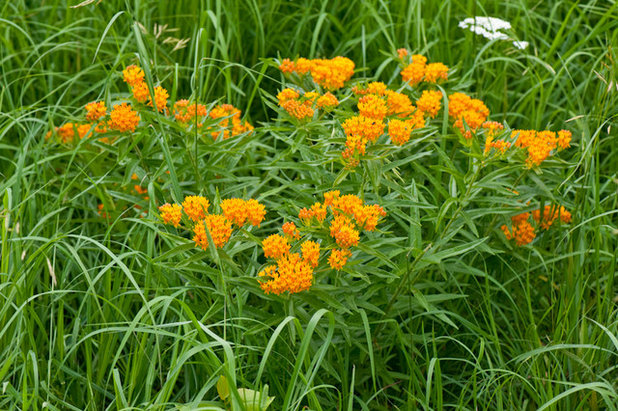
Holm Design & Consulting LLC
Plant milkweed. If you live in monarch butterfly territory, be sure to devote a patch of your garden to milkweed. These butterflies are dependent on this species as a source of food for their young. Without milkweed, there are no monarchs.
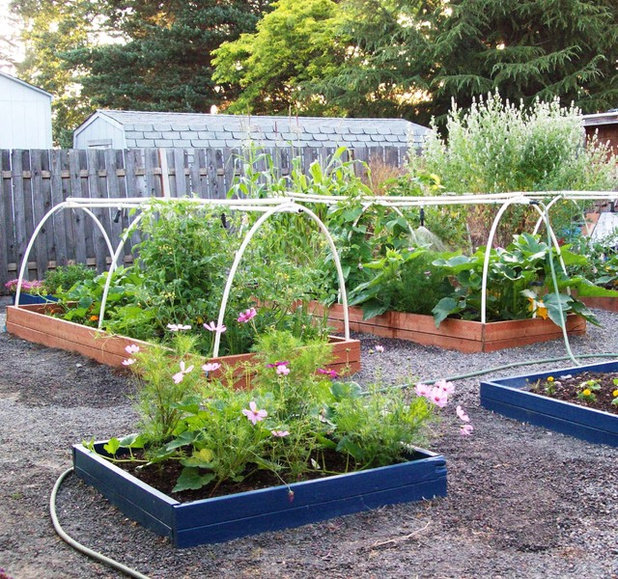 Plant a variety of pollinator-friendly flowers.
Plant a variety of pollinator-friendly flowers. There are thousands of pollinator-friendly flower species, from stunning coneflowers to quaint and cheerful clover. Even kale can be a great food for bees if allowed to flower. In general, bees gravitate toward purple, white and yellow blooms, while hummingbirds and butterflies are attracted to red trumpet-shaped flowers like weigela and fuchsia.
- Research pollinator-friendly plants suitable to your area. Plant a combination of native flowers to attract a wide range of species.
- Design your garden with a long blooming season in mind. Include species that flower from early spring to midfall, or longer if your climate allows. In addition to looking gorgeous, successive blooms will keep your pollinators employed consistently.
- Choose heirloom flowers where possible. Fancy hybrid flowers, such as roses with double rows of tightly ruffled petals, are often inaccessible to pollinators.
Flowers can do more than just beautify your yard. By choosing blooms that attract pollinators, you can create a garden that contributes to your local ecology while adding visual interest.





